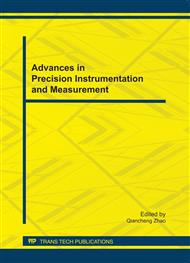p.563
p.570
p.578
p.583
p.587
p.592
p.600
p.606
p.611
Theoretical Analysis of Magnetic-Electric Prospecting Method for Piping and Seepage Detection of Dyke
Abstract:
On the basis of presenting the piping and seepage detection by magnetic-electric prospecting method, the authors analyzed and testified validity of the method. According to calculated results, the magnitude of magnetic field of artificial current was smaller on section if electrodes and cables were set rationally. Usually, the magnetic field magnitude of piping had several times to more than decuple comparing with magnetic field of artificial current. So, the magnetic abnormity could be detected easily by high-precision magnetometers. At the same time, their curves’ characteristics were different evidently. The analysis result shows that the piping and seepage of dyke can be detected by combining method of direct current supplying and high-precision magnetic survey.
Info:
Periodical:
Pages:
587-591
Citation:
Online since:
September 2011
Authors:
Price:
Сopyright:
© 2012 Trans Tech Publications Ltd. All Rights Reserved
Share:
Citation:


